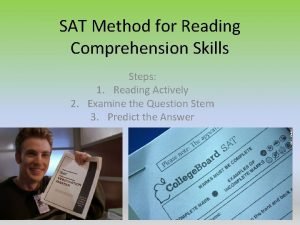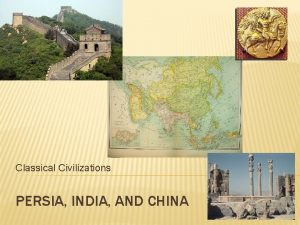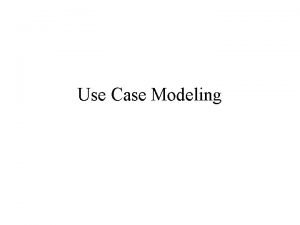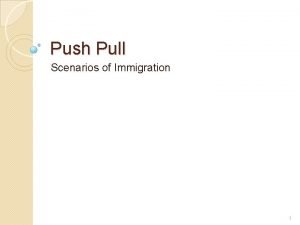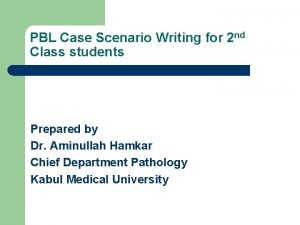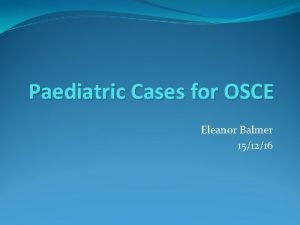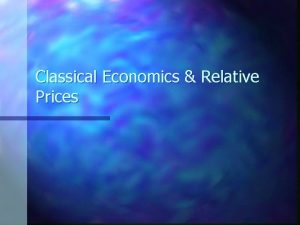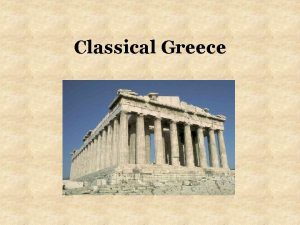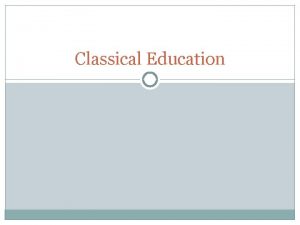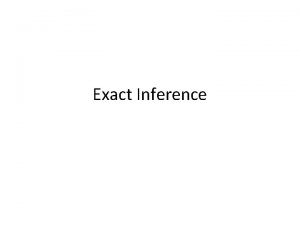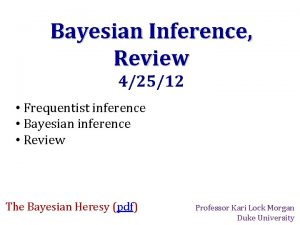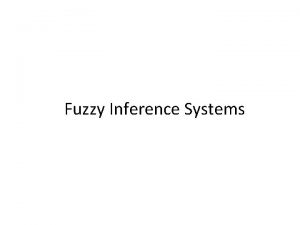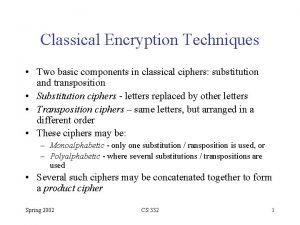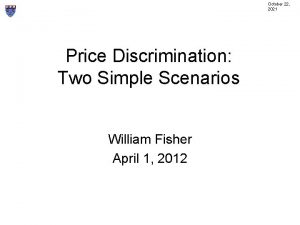Classical Inference Two simple inference scenarios Question 1


![Possible worlds: World A World B X number added [-. 5, . 5] 38 Possible worlds: World A World B X number added [-. 5, . 5] 38](https://slidetodoc.com/presentation_image/9c59ab91cd091aa39ff0ddcc844172d2/image-3.jpg)







![World A X number added [-. 5, . 5] 38 38 [-1, 1] 68 World A X number added [-. 5, . 5] 38 38 [-1, 1] 68](https://slidetodoc.com/presentation_image/9c59ab91cd091aa39ff0ddcc844172d2/image-11.jpg)




















- Slides: 31

"Classical" Inference

Two simple inference scenarios Question 1: Are we in world A or world B?
![Possible worlds World A World B X number added 5 5 38 Possible worlds: World A World B X number added [-. 5, . 5] 38](https://slidetodoc.com/presentation_image/9c59ab91cd091aa39ff0ddcc844172d2/image-3.jpg)
Possible worlds: World A World B X number added [-. 5, . 5] 38 38 [4, 6] 38 38 [-1, 1] 68 30 [3, 7] 68 30 [-1. 5, 1. 5] 87 19 [2, 8] 87 19 [-2, 2] 95 8 [1, 9] 95 8 [-2. 5, 2. 5] 99 4 [0, 10] 99 4 (- ∞, ∞) 100 1 100


Jerzy Neyman and Egon Pearson

D: Decision in favor of: T: The Truth of the matter: H 0: Null Hypothesis H 1: Alternative Hypothesis Correct acceptance Type I Error of H 0 pr(D=H 0| T=H 0) H 0: Null Hypothesis = (1 – ) Type II Error H 1: Alternative Hypothesis pr(D=H 0| T=H 1) = pr(D=H 1| T=H 0) = [aka size] Correct acceptance of H 1 pr(D=H 1| T=H 1) = (1 – ) [aka power]

Definition. A subset C of the sample space is a best critical region of size α for testing the hypothesis H 0 against the hypothesis H 1 if and for every subset A of the sample space, whenever: we also have:

Neyman-Pearson Theorem: Suppose that for some k > 0: 1. 2. 3. Then C is a best critical region of size α for the test of H 0 vs. H 1.

• When the null and alternative hypotheses are both Normal, the relation between the power of a statistical test (1 – ) and is given by the formula � is the cdf of N(0, 1), and q is the quantile determined by . • fixes the type I error probability, but increasing n reduces the type II error 9 probability

Question 2: Does the evidence suggest our world is not like World A?
![World A X number added 5 5 38 38 1 1 68 World A X number added [-. 5, . 5] 38 38 [-1, 1] 68](https://slidetodoc.com/presentation_image/9c59ab91cd091aa39ff0ddcc844172d2/image-11.jpg)
World A X number added [-. 5, . 5] 38 38 [-1, 1] 68 30 [-1. 5, 1. 5] 87 19 [-2, 2] 95 8 [-2. 5, 2. 5] 99 4 (- ∞, ∞) 1 100

Sir Ronald Aymler Fisher

Fisherian theory Significance tests: their disjunctive logic, and p-values as evidence: ``[This very low p-value] is amply low enough to exclude at a high level of significance any theory involving a random distribution…. . The force with which such a conclusion is supported is logically that of the simple disjunction: Either an exceptionally rare chance has occurred, or theory of random distribution is not true. '' (Fisher 1959, 39)

Fisherian theory ``The meaning of `H' is rejected at level α' is `Either an event of probability α has occurred, or H is false', and our disposition to disbelieve H arises from our disposition to disbelieve in events of small probability. '' (Barnard 1967, 32)

• • Fisherian theory: Distinctive features Notice that the actual data x is used to define the event whose significance is evaluated. • Also based on H 0 and H 1 Can only reject H 0, evidence cannot allow one to accept H 0. • Many other theories besides H 0 could also explain the data.

• Common philosophical simplification: • Hypothesis space given qualitatively; • H 0 vs. –H 0, • Murderer was Professor Plum, Colonel Mustard, Miss Scarlett, or Mrs. Peacock • More typical situation: • Very strong structural assumptions • Hypothesis space given by unknown numeric `parameters' • Test uses: • a transformation of the raw data, • a probability distribution for this transformation (≠ the original distribution of interest)

Three Commonly Used Facts • Assume is a collection of independent and identically distributed (i. i. d. ) random variables. • Assume also that the Xis share a mean of μ and a standard deviation of σ.

Three Commonly Used Facts For the mean estimator 1. 2. :

Three Commonly Used Facts The Central Limit Theorem. If {X 1, …, Xn} are i. i. d. random variables from a distribution with mean and variance 2, then: 3. Equivalently:

Examples • Data: January 2012 CPS • Sample: Ph. D’s, working full time, age 2834 • H 0: mean income is 75 k

21996. 00 89999. 52 119999. 9 40999. 92 67600. 00 68640. 00 96999. 76 77296. 96 65000. 00 71999. 72 100100. 0 45999. 72 149999. 7 19968. 00 10140. 00 37999. 52 74999. 60 69992. 00 31740. 80 65000. 00 57512. 00 87984. 00 35999. 60 38939. 68 99999. 64 74999. 60 149999. 7 47996. 00 62920. 00 54999. 88 104000. 0

Hyp. H 0 Value -1. 024022 Probability 0. 3138

Comments • The background conditions (e. g. , the i. i. d. condition behind the sample) are a clear example of `Quine-Duhem’ conditions. • When background conditions are met, ``large samples’’ don’t make inferences ``more certain’’ • Multiple tests • Monitoring or ``peeking'‘ at data, etc.

Point estimates and Confidence Intervals

• Many desiderata of an estimator: • • Consistent Maximum Likelihood Unbiased Sufficient Minimum variance Minimum MSE (mean squared error) (most) efficient

• By CLT: approximately: • Thus: • By algebra: • So:

Interpreting confidence intervals • The only probabilistic component that determines what occurs is. • Everything else are constants. • Simulations, examples • Question: Why ``center’’ the interval?

Confidence Intervals • $68, 898. 16 ± $12, 152. 85 • ``C. I. = mean ± m. o. e’’ • = ($56, 745. 32 , $81, 051. 01)

Using similar logic, but different computing formulae, one can extend these methods to address further questions e. g. , for standard deviations, equality of means across groups, etc.

Equality of Means: BAs Sex 1 2 All Count 223 209 432 Value 4. 424943 Mean 63619. 54 51395. 43 57705. 56 Std. Dev. 31370. 01 25530. 66 29306. 13 Probability 0. 0000

Equality of Means: Ph. Ds Sex Count Mean 1 21 2 11 All 32 Value -0. 560745 Std. Dev. 66452. 71 73566. 76 36139. 78 29555. 10 68898. 16 33707. 49 Probability 0. 5791
 Costa level questions examples
Costa level questions examples Whole food blues sat answers
Whole food blues sat answers Inference questions examples
Inference questions examples Questions without question words
Questions without question words Advantages and disadvantages of probing questions
Advantages and disadvantages of probing questions Contoh open-ended question
Contoh open-ended question What is factor relating questions
What is factor relating questions Indirect questions with if and whether
Indirect questions with if and whether Example of a compelling question
Example of a compelling question Compelling question examples
Compelling question examples The two classical civilizations of ancient india were the
The two classical civilizations of ancient india were the Present simple future simple past simple exercises
Present simple future simple past simple exercises Simple present and simple future
Simple present and simple future Simple past simple present simple future
Simple past simple present simple future Present simple past simple future simple
Present simple past simple future simple Simple present simple past and simple future
Simple present simple past and simple future Present continuous present simple past simple exercise
Present continuous present simple past simple exercise Use of has been and have been
Use of has been and have been Simple present negativo
Simple present negativo Present simple past simple future simple
Present simple past simple future simple Workplace etiquette worksheet
Workplace etiquette worksheet Good hazard scenarios describe where it is happening
Good hazard scenarios describe where it is happening Use case description
Use case description Examples of problem solving scenarios for adults
Examples of problem solving scenarios for adults Scene size-up scenarios
Scene size-up scenarios Push and pull scenarios
Push and pull scenarios Personal safety scenarios
Personal safety scenarios Refusal skills role play scenarios
Refusal skills role play scenarios Patient scenarios examples
Patient scenarios examples Pc hpc pmh dh
Pc hpc pmh dh Child abuse scenarios
Child abuse scenarios Trans
Trans

